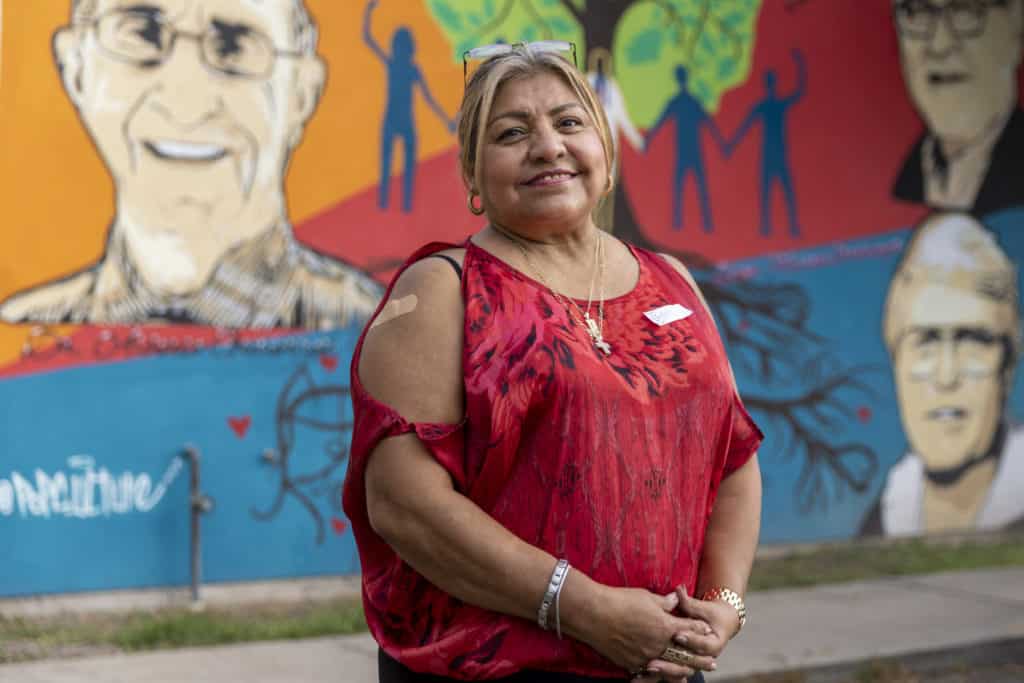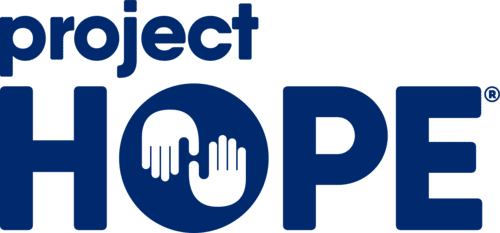Despite more than two years of COVID-19, we remain steadfast in our mission to improve global health — and there are lots of reasons to be optimistic about the world’s progress.
Over the past year, we’ve seen remarkable collaboration across borders, between institutions, and among individuals. We’ve seen exciting new innovations, progress against some of the world’s deadliest diseases, expanded support for mental health services, and landmark commitments at the UN climate negotiations.
Though the threats to the world’s health are many, there are still plenty of headlines that give us hope for a healthier, more equitable world in 2022. Here are five trends that give us hope for the year ahead.
1. Breakthrough mRNA vaccines
Venezuelan boy playing soccer in Houston
Guillermo, 6, recently arrived with his family in Houston, Texas, after leaving their home in Venezuela. Thanks to Project HOPE, he received his COVID-19 vaccine through the Ibn Sina Clinic, a safety net clinic Project HOPE supports in Houston. Photo by James Buck for Project HOPE, 2021.
Messenger RNA vaccines, or mRNA vaccines, have been under study and development for decades. Last year, they became available to the public as some of the first COVID-19 vaccines approved for use. The implications for the future of global health are monumental.
What’s the big deal about mRNA? These vaccines can be developed and produced in large quantities and faster than other methods — without compromising safety or efficacy.
Now that the case has been made for mRNA, we’ll continue to see vaccine development accelerate. In response to the omicron COVID-19 variant, Pfizer/BioNTech announced it would have a variant-specific vaccine ready to ship within 100 days — a record time in the complex world of vaccine development. (Before COVID-19, it typically took anywhere from five to 15 years.) mRNA technology has also given scientists new hope for a long-elusive HIV vaccine, which could bring an end to AIDS as a major health concern.
The approval and use of mRNA vaccines also means we’re better positioned and prepared to face the next pandemic, while future mRNA vaccine technology may mean we only need one vaccine for protection against multiple diseases.
This year, Project HOPE will continue to provide COVID-19 vaccine training to health workers and accelerate access to vaccines in vulnerable and underserved communities around the world.
2. The expansion of mental health support
Virtual mental health and resiliency training
With support from the Abbott Fund, Project HOPE has been able to deliver mental health and resiliency trainings to health care workers around the world, including virtual sessions that prepare master trainers to cascade the trainings down to others.
COVID-19 has taken a major toll on mental health worldwide, especially on younger people, health care workers, and women. But the pandemic has also helped reduce the stigma around mental health issues, exposing how common they are (close to 1 billion people struggle with conditions like anxiety or depression) and how widespread the need is for quality mental health services: More than 75% of people in low- and middle-income countries go without treatment.
A crisis that was once ignored is now a central part of the global health care conversation. More and more governments and businesses are focused on initiatives to improve access to mental health. During the World Health Assembly in May 2021, countries around the world recognized the need for a massive scale-up in investment in mental health. The U.S. government is calling for more than doubling funding to address mental health and substance use this year.
At Project HOPE, we’ll continue to play our part in building a world where everyone has access to quality care — including mental health support. We’re currently implementing mental health and resiliency trainings for frontline health workers, which will reach tens of thousands of health care workers across five continents.
3. The momentum – and commitment – needed to address the climate crisis
Hurricane Ida damage in Louisiana
Hurricane Ida devastated LaPlace, Louisiana in August 2021, leaving widespread damage that will take years to rebuild. Climate change will continue to threaten the world’s health unless immediate and drastic actions are taken. Photo by Peter Forest for Project HOPE, 2021.
At the 2021 United Nations climate conference, COP26, global leaders and more than 20,000 delegates from nearly 200 countries made important pledges to take climate action and reach net-zero emissions by 2050. These include new commitments to invest in clean technologies, cut methane emissions, and end and reverse deforestation, while financial institutions committed over $130 trillion to help get the economy to net zero.
Going into 2022, we remain committed to our own pledge to strengthen health care systems in places that are most vulnerable to the changing climate, like Haiti, Indonesia, and the Bahamas. We’ll be supporting health workers with the knowledge and skills they need to strengthen and protect their communities and withstand the impacts of climate change.
>> Learn how climate change impacts human health
4. The first malaria vaccine for children
Project HOPE volunteers following Cyclone Idai in Mozambique
Project HOPE volunteer doctor Andre Gvozden treats a young boy in Mozambique following Cyclone Idai in 2019. Many of the storm survivors Project HOPE reached after the storm also had malaria, a disease that killed 670,000 people in 2020 — many of them children. Photo by James Buck for Project HOPE, 2021.
In October, the World Health Organization approved the world’s first malaria vaccine for children under the age of 5 in sub-Saharan Africa. The groundbreaking RTS,S malaria vaccine has been piloted with great success in Ghana, Kenya, and Malawi since 2019.
Its approval for widespread use is a huge step toward eradicating the disease and could save tens of thousands of children’s lives each year. (A child under the age of 5 dies from malaria every two minutes.)
The research and development of the vaccine has also informed the innovation of new prevention and treatment tools, such as new-formulation indoor residual spraying, artemisinin-based treatments, rapid diagnostic tests, and long-lasting insecticide-treated nets. Significant investment in these tools has already helped save more than 10.6 million lives and prevent over 1.7 billion cases over the past 20 years.
5. We’re closing the vaccination gap
Community health worker Lesly Galvan at a mobile clinic in McAllen, Texas
Lesly Galvan, a community health worker at El Milagro clinic in McAllen, Texas, works at a mobile clinic near the U.S.-Mexico border that provides primary care and vaccines to people who cannot travel to the main clinic. Project HOPE is helping close the vaccine gap in underserved communities across Texas, including refugee and migrant populations. Photo by James Buck for Project HOPE, 2021.
The vaccination gap between developing and developed countries has underscored the health inequities across borders — but the good news is the gap is slowly closing. And it’s a matter of proper allocation, not a lack of supply. According to the World Health Organization, if COVID-19 doses were distributed equitably, they would have covered all health workers and older people.
This year, donor countries such as the U.S. and China are expected to give roughly three-quarters of the nearly 2.7 billion COVID-19 vaccine doses they have promised to recipient countries. These doses won’t be enough to bridge the gap completely, but it will make a difference.
The gaps within countries are closing as well. In the U.S., for example, vaccination disparities between white and Black American populations have been “virtually erased.”
In Texas, Project HOPE is helping promote vaccine equity by improving access to the vaccine in underserved communities in Houston and McAllen, near the U.S.-Mexico border. This work is helping free and charitable clinics fight misinformation and take vaccines into the communities where refugees, migrants, and other underserved populations live.



